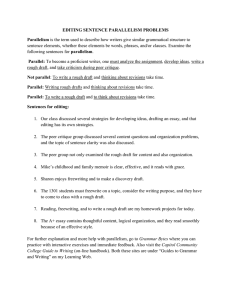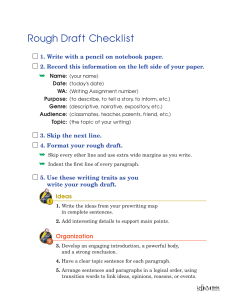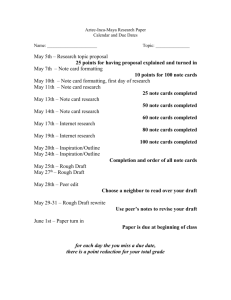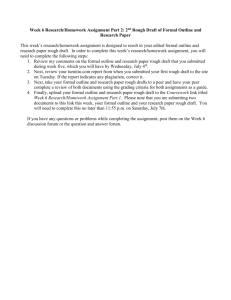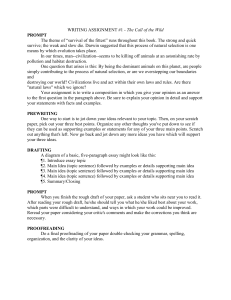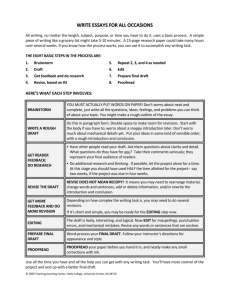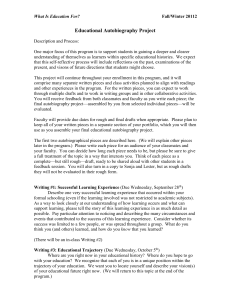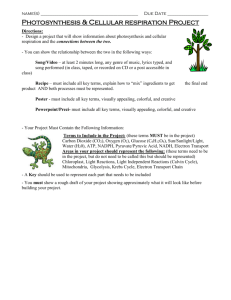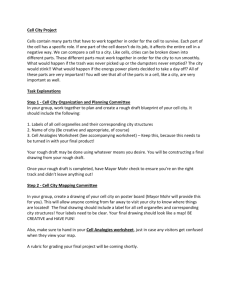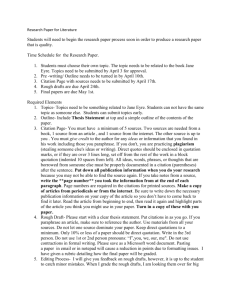TipsforWritingRoughDraftSBS200
advertisement
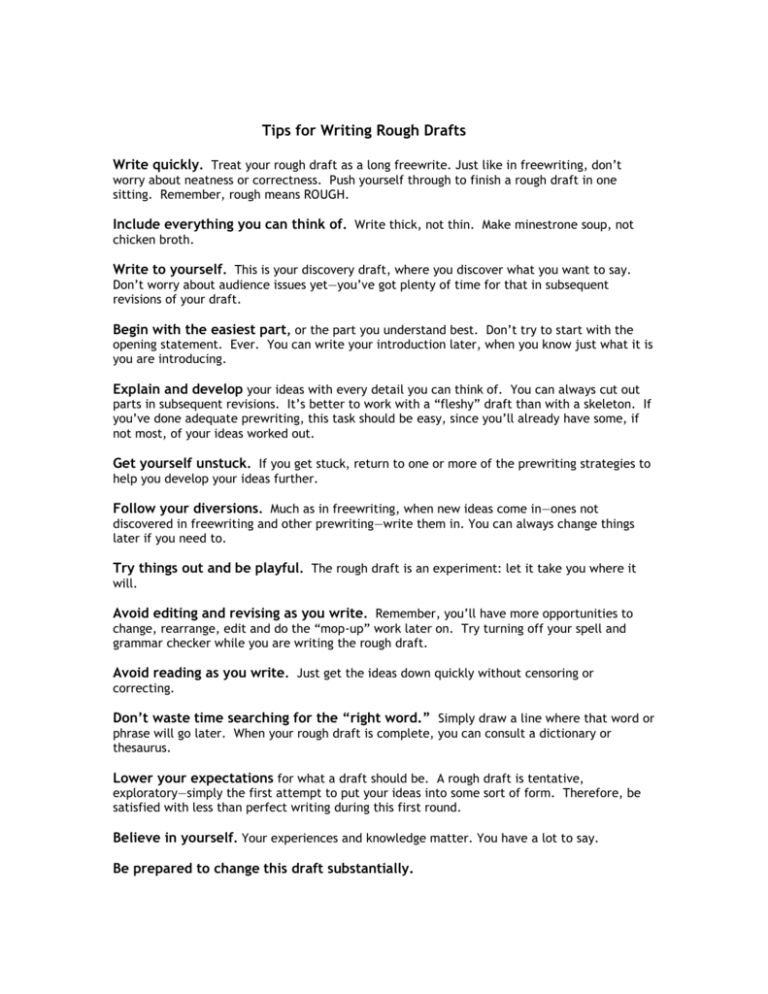
Tips for Writing Rough Drafts Write quickly. Treat your rough draft as a long freewrite. Just like in freewriting, don’t worry about neatness or correctness. Push yourself through to finish a rough draft in one sitting. Remember, rough means ROUGH. Include everything you can think of. Write thick, not thin. Make minestrone soup, not chicken broth. Write to yourself. This is your discovery draft, where you discover what you want to say. Don’t worry about audience issues yet—you’ve got plenty of time for that in subsequent revisions of your draft. Begin with the easiest part, or the part you understand best. Don’t try to start with the opening statement. Ever. You can write your introduction later, when you know just what it is you are introducing. Explain and develop your ideas with every detail you can think of. You can always cut out parts in subsequent revisions. It’s better to work with a “fleshy” draft than with a skeleton. If you’ve done adequate prewriting, this task should be easy, since you’ll already have some, if not most, of your ideas worked out. Get yourself unstuck. If you get stuck, return to one or more of the prewriting strategies to help you develop your ideas further. Follow your diversions. Much as in freewriting, when new ideas come in—ones not discovered in freewriting and other prewriting—write them in. You can always change things later if you need to. Try things out and be playful. The rough draft is an experiment: let it take you where it will. Avoid editing and revising as you write. Remember, you’ll have more opportunities to change, rearrange, edit and do the “mop-up” work later on. Try turning off your spell and grammar checker while you are writing the rough draft. Avoid reading as you write. Just get the ideas down quickly without censoring or correcting. Don’t waste time searching for the “right word.” Simply draw a line where that word or phrase will go later. When your rough draft is complete, you can consult a dictionary or thesaurus. Lower your expectations for what a draft should be. A rough draft is tentative, exploratory—simply the first attempt to put your ideas into some sort of form. Therefore, be satisfied with less than perfect writing during this first round. Believe in yourself. Your experiences and knowledge matter. You have a lot to say. Be prepared to change this draft substantially.
